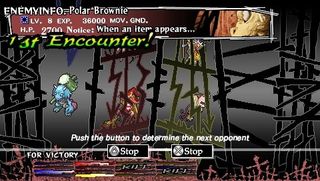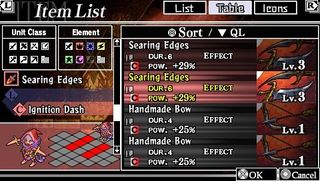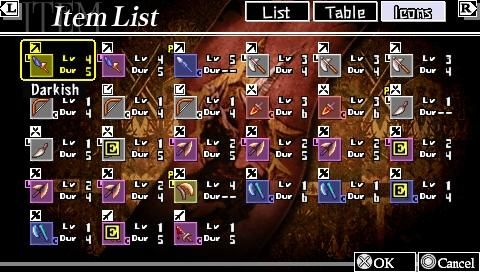GamesRadar+ Verdict
Pros
- +
Gorgeous hand-drawn visuals
- +
Tons of depth
- +
Innovative mixture of genres
Cons
- -
Dense trial-and-error learning curve
- -
Frequent load screens
- -
Largely uninteresting plot
Why you can trust GamesRadar+
By some amazing stroke of fate, the PSP has managed to carve out a very respectable raft of strategy games across the whole gamut of possible takes on the genre. Old-school PS one classics have been reborn, more modern grind-heavy takes have been ported from the PS2 and PSP-exclusive meldings of the two have made traditions feel new again.

This means strategy fans are already well-served, but it also means newcomers have increasingly had to step up their offering. Take Japanese dev house STING, no strangers to strategy games, but as they proved on the DS last year, they're quite capable of messing with a good thing. Knights in the Nightmare is one part bullet-dodging real-time action and another filled with careful manipulation of turn-based tropes.
The result is now quite familiar to DS strategy fans, and though there's been plenty of time since the Nintendo-based release, little here has changed beyond adapting the visuals for the PSP's screen - and even that was done with minimal fuss. This means the same incredibly dense rule set and logic still has to be bumbled through for hours. There are multiple moments when it's possible to screw yourself up enough to have to start over if you didn't carefully manage your three save slots. Oh, and all that interface clutter on the DS? Still here, just... stretched a bit.
No, this is not a heavily-tweaked update, it's about as straight a port as I've seen on the PSP, but that doesn't mean the gameplay isn't rife with reasons to put in the time to learn the ins and outs. Granted, there are a lot of ins and outs to wrestle with, from the way you have to kill enemies after picking their position on a giant tic tac toe grid to carefully dancing around incoming shots while charging up your own - there's plenty to consider.

You're going to hear this a lot in reviews of the game, but it's simply too dense to actually detail in the space of a review. There are two different phases for your attacks: Law and Chaos, and in each every single unit you've brought to battles shifts its attack range, style and effects on the smallish grid-like areas where tussles go down. A careful balance must be found between attacking enemies in each of these phases normally to collect MP gems, and then unleashing charged-up attacks by burning that MP to actually dole out attacks that can kill enemies.
There's fog to consider and the fact that most units can only face two different directions on the map, as well as key items that have to be collected from various boxes and chests scattered in every level or you can't recruit new soldiers. Leveling up characters and item crafting can only be done between chapters, and committing to merging two items or characters to strengthen them is a constant and one-time-only action. It's safe to say your first five or six hours will be spent just trying to figure out what you've learned, even with dozens of tutorials and tip screens to pore through - something the game makes entirely optional.

The whole fact that you never actually interact with enemies and instead float as a wisp above the action where you can be attacked by oddly-shaped and moving bullets that whittle away at your time meter every round is a perfect example of how different this game really is. Even still, that depth and freshness is powerfully addictive. Once properly grasped, the constant ducking and dodging you're doing while charging up and aiming your units' attacks is completely enthralling.
One could rightly complain about the game of temporal Twister the plot does, jumping back and forth along the timeline to reveal, at turns, what happened before the start of the game and what's happening now that a king's soul has been set loose by a mysterious girl. The reveal of what's going on and watching the pieces fall into place is indeed rewarding, but this isn't a game whose plot is meant to be digested in small bites.

Knights in the Nightmare somehow manages to successfully blend twitch gameplay with a thinking-man's chess-like pre-planning. With budgets of time and attack force, controlled placement and facing of units and a wealth of blink-and-you'll-miss-it chances to build your army, this is not a game for everyone. Those that choose to stick it out, however, will find a beautifully visualized, intensely technical strategy game that's still unlike anything else out there, and well worth your time.
Oct 25, 2010
More info
| Genre | Strategy |
| Description | A wholly unique take on the well-worn path to a traditional Japanese strategy game, Knights in the Nightmare is unlike anything else on the PSP -- even almost a year and a half after it hit the DS. |
| Platform | "PSP","DS" |
| US censor rating | "Teen","Teen" |
| UK censor rating | "","" |
| Release date | 1 January 1970 (US), 1 January 1970 (UK) |

The Fallout TV show finally corrects my big game frustration: giving romance the focus it deserves

New horror movie featuring Midnight Mass, Scream, and Fear the Walking Dead stars teases a bloody, cannabis-themed nightmare in first trailer

Here’s the two words of advice Fury Road star Nicholas Hoult gave Anya Taylor-Joy for the Mad Max prequel
